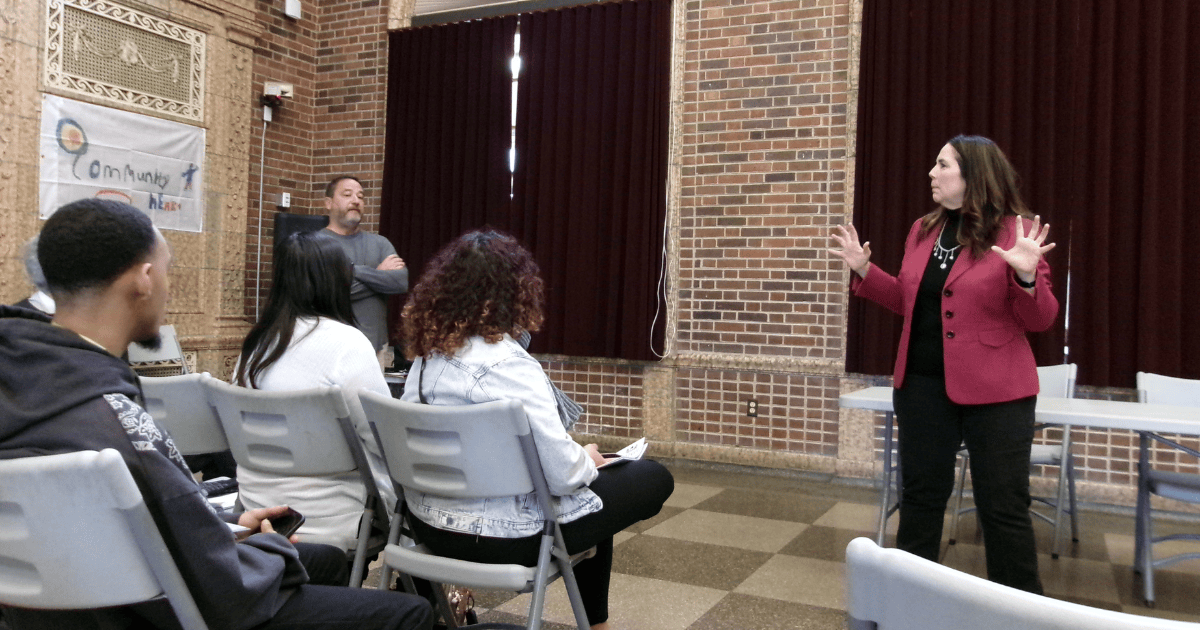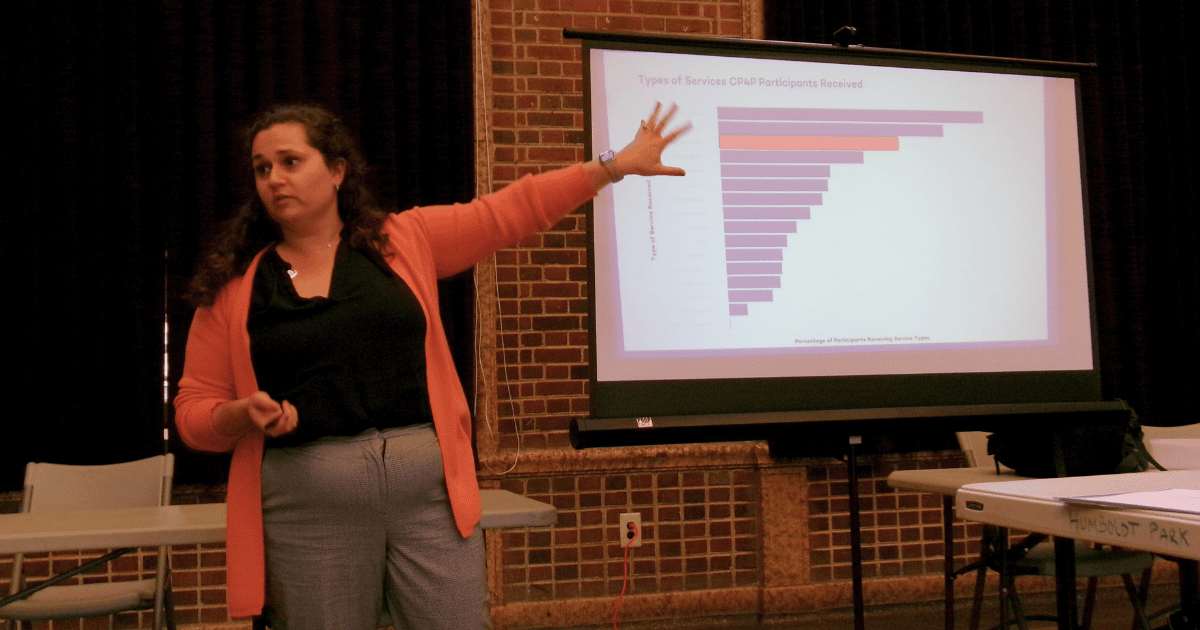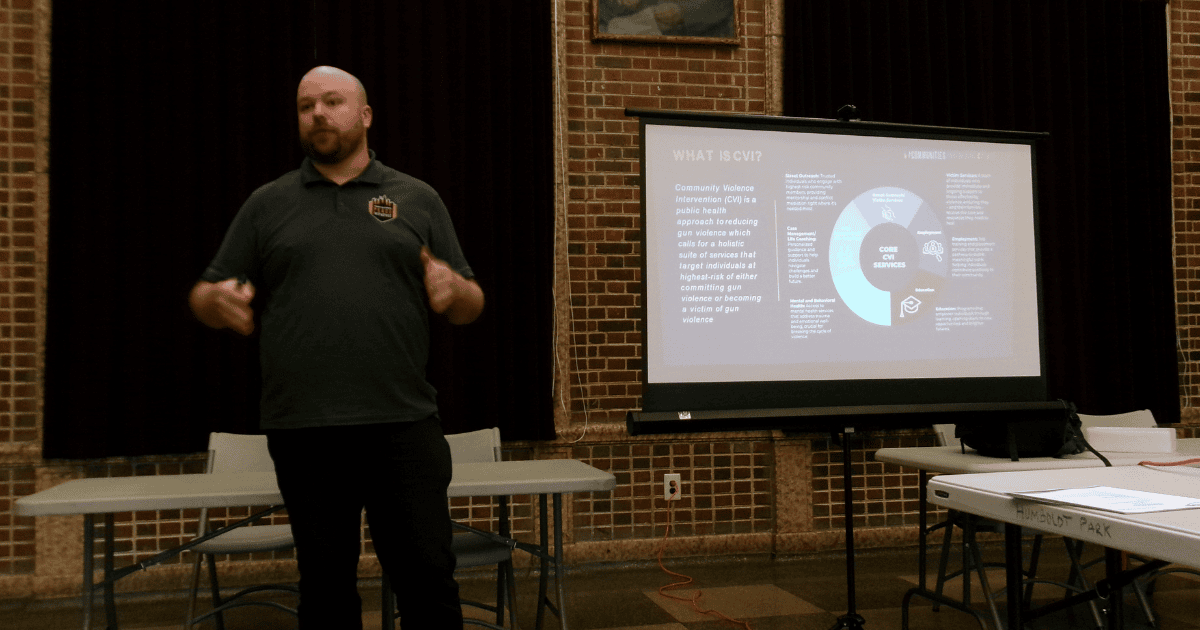ALSO Hosts Community Violence Intervention Education Meeting in Humboldt Park

The Alliance of Local Service Organizations (ALSO) gathered with elected officials and community violence intervention (CVI) stakeholders on Monday, October 28, 2024 for an educational meeting on gun violence in the Humboldt Park neighborhood. The meeting brought together several organizations and individuals, including Metropolitan Peace Initiatives, the Center for Neighborhood Engaged Research & Science (CORNERS) at Northwestern University, New Life Centers, YMCA, BUILD, Puerto Rican Cultural Center, Family Focus, Association House of Chicago, Chicago CRED, the Police District Council of Chicago, the Chicago Community Justice Foundation, Wright College, DePaul University, representatives for Congresswoman Delia C. Ramirez and State Senator Omar Aquino, Alderman Daniel La Spata, and Illinois State Representative Lindsey LaPointe.
ALSO Executive Director Lori Crowder described the afternoon as an opportunity for accountability and reflection on current CVI efforts, including the collaborative scaling initiative Scaling Community Violence Intervention for a Safer Chicago (SC2). “This meeting today is not just about this scaling initiative in Humboldt Park, but it’s about the broader work of our community partners across the Northwest side.”
Crowder expressed her optimism about the progress being made to reach community members in Humboldt Park, sharing that in the last 90 days, 56 new individuals have been referred and are now receiving services like employment assistance and legal aid. “We’ve all been working hand-in-glove over the past several months to create an approach to addressing what we’re calling underserved pockets in Humboldt Park,” said Crowder, “people who are at risk of shooting or being shot, and haven’t received services, and they’re not in school or employed… We’re beginning to slowly make some change and see some growth.”
Dr. Marisa Ross, the Director of Research and Policy for CORNERS, demonstrated the impact CVI has made on the city of Chicago, sharing data that shows CP4P organizations are positively impacting Chicago’s underserved neighborhoods. “The first lesson we found over our work over the past six years is that CVI organizations are indeed finding the right people, people who are at highest risk of involvement in gun violence.

“We saw that individuals who were participants in CP4P were at six times greater risk of gun violence than even those within their own neighborhoods.”
Dr. Ross also shared that “CVI is much more than violence prevention. And street outreach workers have become frontline staff, more than the typical violence interruption,” illustrating the holistic services CVI organizations provide, including mentoring, employment, mental health services, education, legal, housing, and a number of other services.
Dr. Ross also identified the urgent need for adequate and available mental health services, higher wages, and educational opportunities for the street outreach workers on the ground. “CVI is a field very much in need of support.”
MPI Policy Analyst Alec Freytag shared information about the funding landscape of CVI, and the need to sustain that level of support in the coming years, not only for the neighborhoods, but for the individuals. “We are at over $200 million of funding, and the vast majority of that is public. That is the reason this work can continue — because we are paying people. We are supporting them and giving them a path to successful employment.” However, next year will see a change in the funding of CVI programming, because pandemic funding through the American Rescue Plan Act is set to expire in 2025. Freytag emphasized the need for continued private, public, city, state, and county funding to ensure this critical work is not interrupted: “We need to make sure that gap is made up.”

Freytag shared that CP4P participants saw a 44% decrease in their likelihood of being a victim of a violent shooting (according to the Center for Neighborhood Engaged Research & Science’s 2018-2023 Research Evaluation Report), and that this often caused a ripple effect out from the individual being served to their community. “The biggest thing with CVI is our goal is to provide a holistic approach to reducing violence. We are not punitive. We are not going out and arresting people. We want to support our neighbors, our friends, bring them into the community, help them not only stop causing violence, but also help them achieve that positive benefit for their neighbors.”
Crowder opened the floor for community partners to discuss the data. Alderman of the First Ward Daniel La Spata shared that finally, “the feelings are catching up to the data.”
He explained that his interactions with constituents have changed over the years, and the presence of street outreach workers on the blocks is a large part of that change. “For the first couple of years, I would go out and talk about your work, and people would say, ‘Well, that’s long term. What about the police?’” said La Spata. “Now, I go and talk to neighbors and they say, ‘We saw the teams out with their neon vests.’ They’re feeling the presence in ways they weren’t before.”
Alees Edwards, a member of the Chicago Police District Council representing District 11, was assured that street outreach workers’ consistent presence has had a huge impact on the Humboldt Park community. “The people who we’re trying to reach, they’re actually opening up. They’re sharing their issues, their problems, and ways in which we could actually help.”
